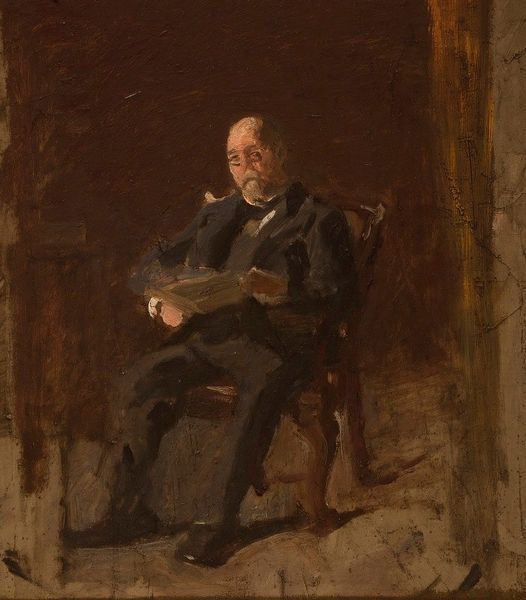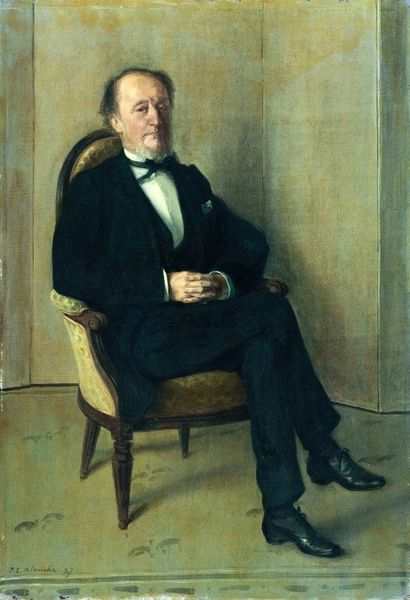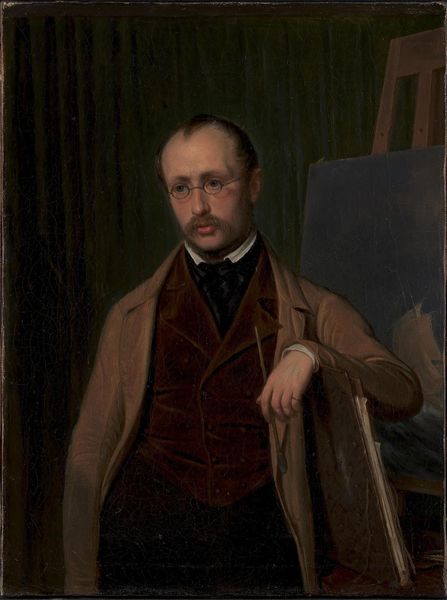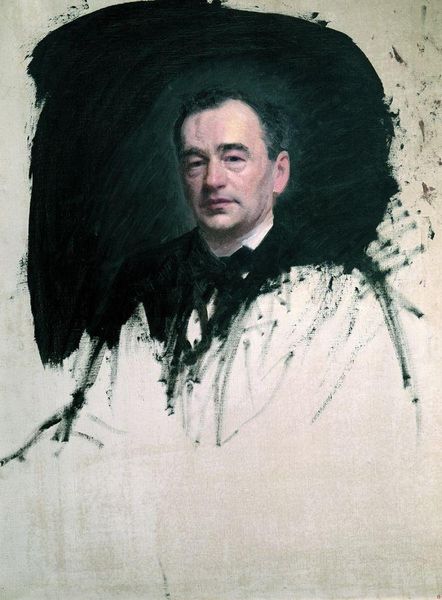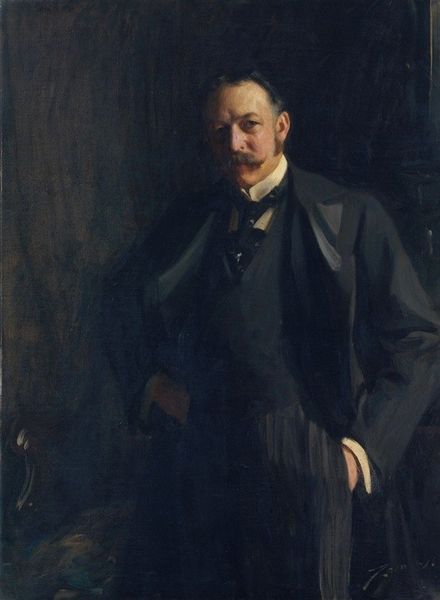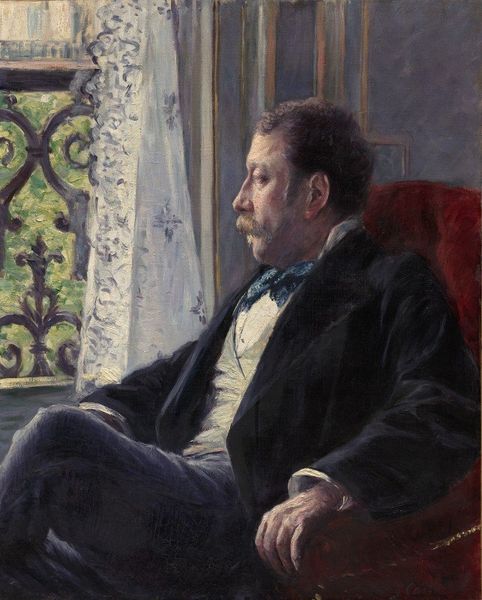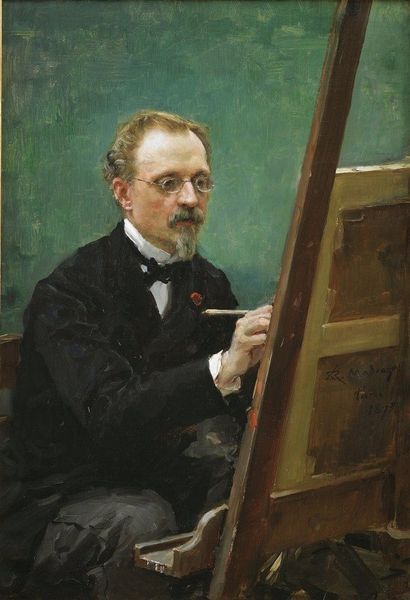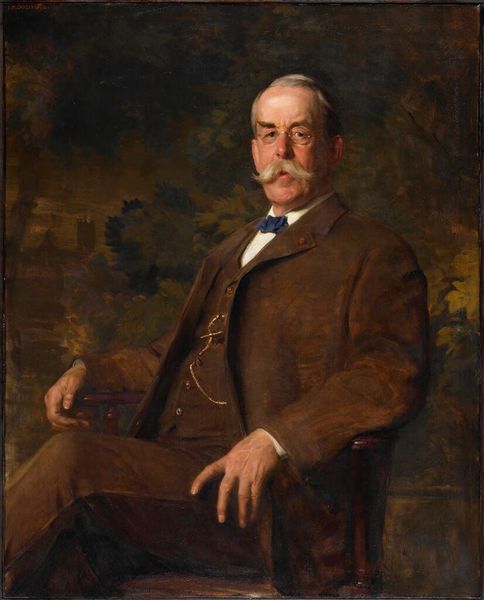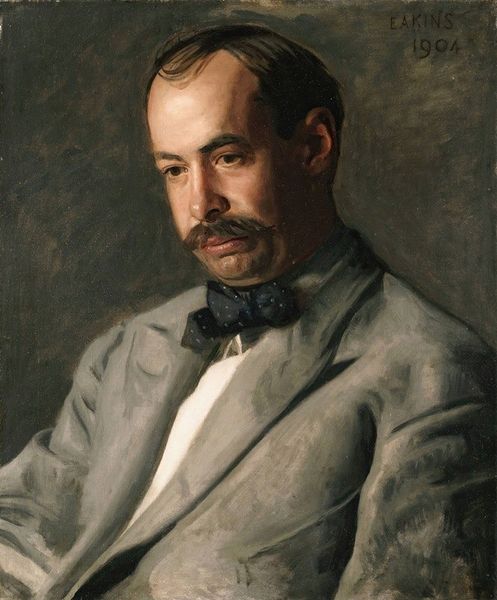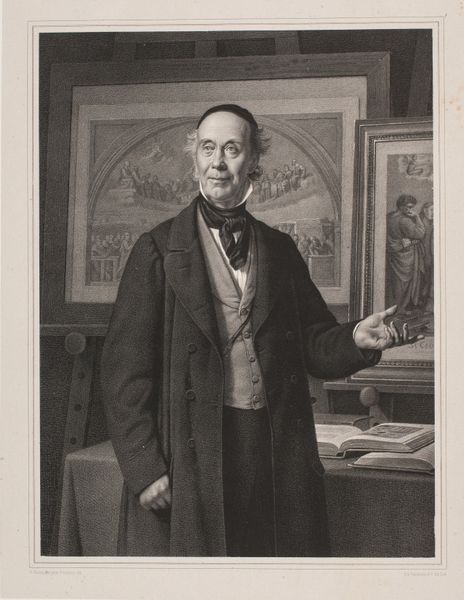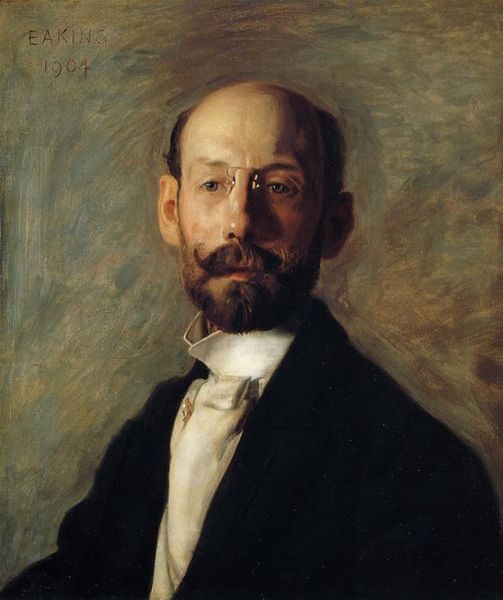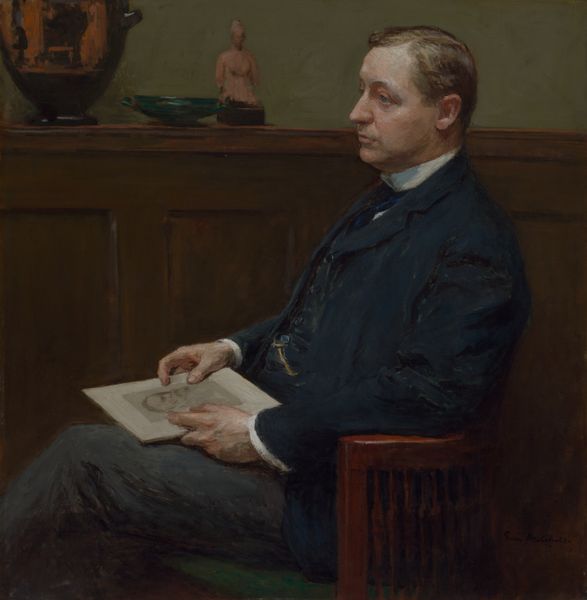
Copyright: Public domain
Editor: We're looking at Magnus Enckell's "Portrait of the Poet Otto Manninen," painted in 1903 using oil. It has such a studious, almost melancholy air to it. All the clutter on the table speaks to his intellectual life, but also feels…overwhelming. What stands out to you in this piece? Curator: The setting is key here. Consider the institutional framing of artistic production at the turn of the century. The image isn't just *of* a poet, but stages him within a clear visual metaphor of artistic labor and intellectual pursuit. Manninen isn't depicted in nature, for instance, or engaged in conversation; he is shown amidst the tools and products of his work: books, papers, ink. Enckell subtly elevates the *idea* of poetry itself. Do you see any tension between this elevation and the 'melancholy' you mentioned? Editor: Absolutely! The weight of all that "labor," as you put it, almost seems to bear down on him. He isn't gazing out into the distance, dreaming; he is literally surrounded by stuff. It reminds me how we romanticize art without acknowledging how the demands and social expectations might feel stifling. Curator: Precisely. Also consider who commissioned this work, how it was exhibited, who had access to view it, and its function. A painting like this was meant to not only immortalize Manninen but to validate and solidify the cultural position of Finnish artists and intellectuals in a rapidly changing society. It's as much about nation-building and cultural authority as it is about one man. Editor: That reframes the painting entirely! It's fascinating to think of a portrait functioning as a kind of cultural statement, legitimizing the artist and his milieu. I'll definitely view these "painterly" depictions through a different lens from now on. Curator: Glad I could help shed a different light! There's much to be discovered beyond aesthetics!
Comments
No comments
Be the first to comment and join the conversation on the ultimate creative platform.
